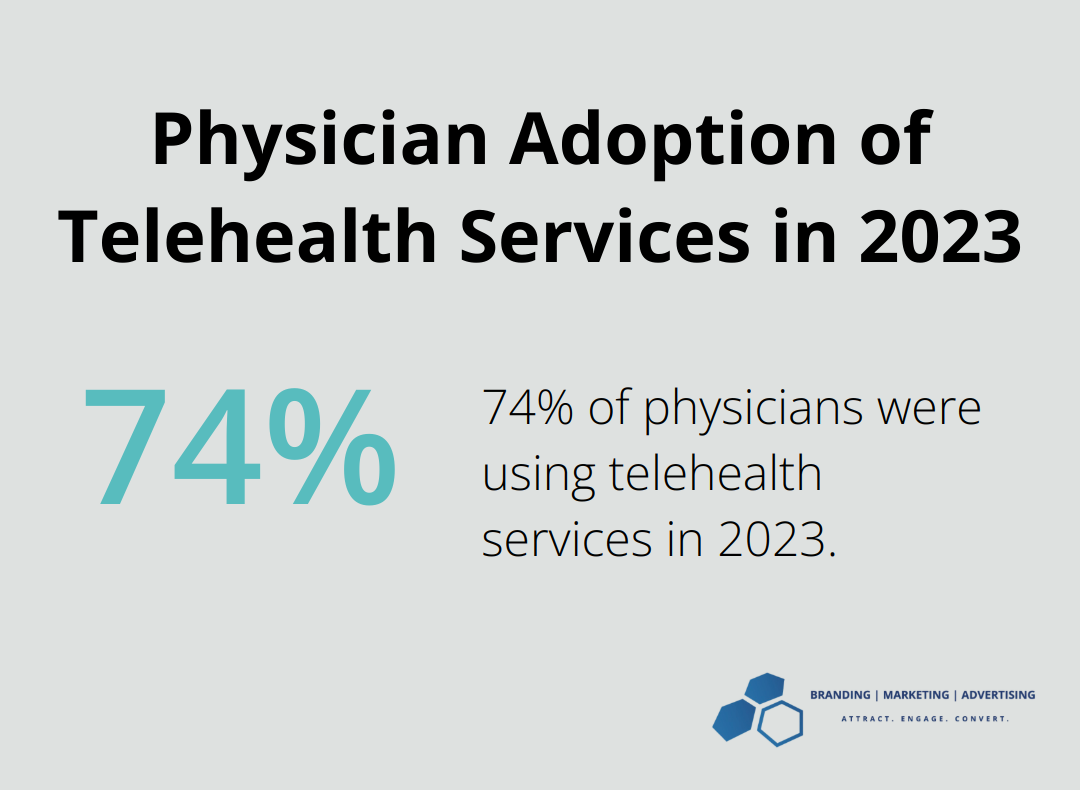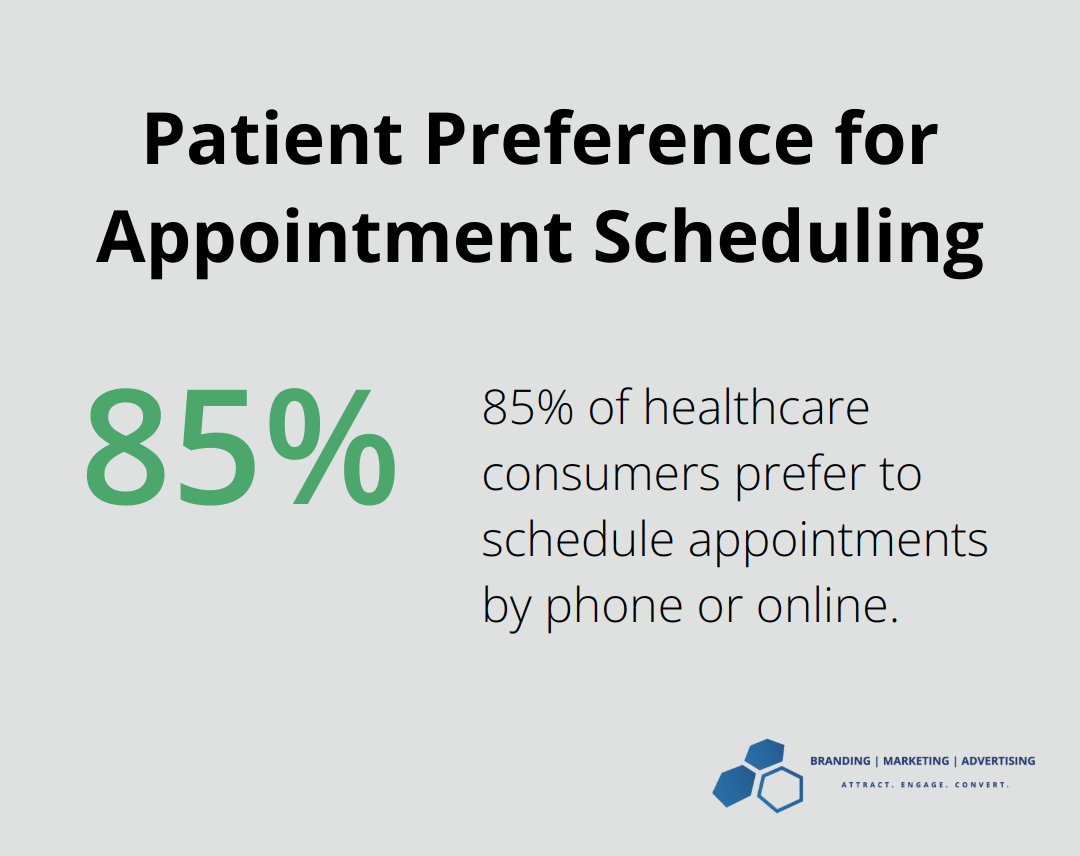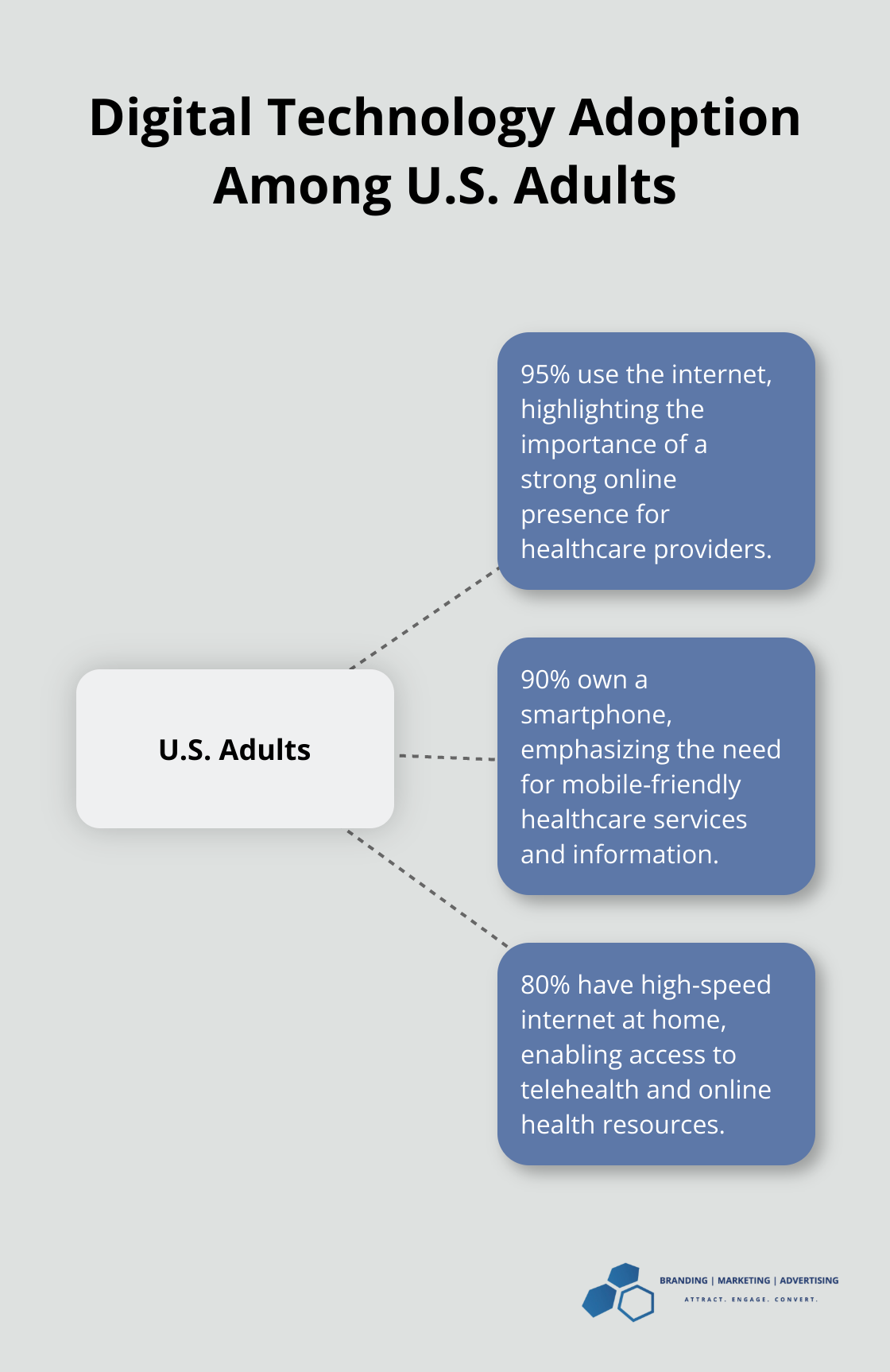How to Create a Successful Health Care Marketing Campaign
At Branding | Marketing | Advertising, we know that creating a successful healthcare marketing campaign is essential for providers to stand out in a competitive landscape.
With the right approach, you can effectively reach your target audience and showcase the value of your services.
This guide will walk you through the key steps to develop a healthcare marketing campaign that resonates with patients and drives results.
Who Are Your Healthcare Patients
Understanding your target audience forms the foundation of any successful healthcare marketing campaign. At Branding | Marketing | Advertising, we recognize the importance of this step for healthcare providers aiming to make a significant impact.
Analyze Patient Demographics
Start by examining your current patient base. Look at age ranges, gender distribution, income levels, and geographic locations. This data provides valuable insights into who uses your services. For example, a pediatric clinic might find that 70% of their patients come from families with household incomes above $75,000 within a 10-mile radius.
Don’t limit yourself to surface-level information. Explore specific health concerns, lifestyle habits, and preferences. Do your patients prefer online scheduling or traditional phone calls? These details will shape your marketing approach.
Identify Healthcare Trends
Stay informed about healthcare trends. The rise of telemedicine has skyrocketed since 2020. Telehealth usage has declined since its peak in mid-2020 but remains a substantial share of health care, surpassing pre-pandemic levels. In 2023, 74% of physicians were using telehealth services. This trend suggests that highlighting your telemedicine services could significantly impact your marketing strategy.

Another trend to watch is the growing focus on preventive care. A study by the Centers for Disease Control and Prevention found that only 8% of US adults aged 35 and older received all high-priority preventive services. This gap presents an opportunity for healthcare providers to educate and attract patients interested in proactive health management.
Develop Patient Personas
Now, bring your data to life with patient personas. These are fictional representations of your ideal patients, based on real data and market research. For example, “Health-Conscious Hannah” might be a 35-year-old working mother who prioritizes preventive care for her family and values convenience in healthcare services.
Create 3-5 detailed personas, each with unique characteristics, motivations, and pain points. These personas will guide your marketing efforts, helping you craft messages that resonate with real people (not just demographic segments).
Conduct Ongoing Research
Understanding your audience isn’t a one-time task. It’s an ongoing process that evolves with your patients and the healthcare landscape. Regularly revisit and refine your audience insights to ensure your marketing campaigns remain relevant and effective.
Leverage Data Analytics
Use data analytics tools to gain deeper insights into your patient base. These tools can help you track patient behavior, preferences, and engagement with your marketing efforts. This information is invaluable for refining your marketing strategies and improving patient outcomes.
As you move forward in creating your healthcare marketing campaign, the next crucial step is to craft a compelling message that resonates with your newly defined target audience. This message should address their specific needs and concerns while highlighting the unique benefits of your healthcare services.
How to Craft a Message That Resonates
At Branding | Marketing | Advertising, we understand that creating a compelling message is essential for any successful healthcare marketing campaign. Your message must directly address your target audience, tackle their needs and concerns, and showcase the unique benefits of your services.
Focus on Patient Outcomes
Start by emphasizing the outcomes patients desire. Instead of simply listing your services, highlight how they improve patients’ lives. A dental practice might promote “pain-free smiles” rather than “root canal treatments.” This approach connects more deeply with patients seeking relief and comfort.
85% of healthcare consumers still prefer to schedule appointments by phone or online. Your message should address common patient concerns such as wait times, insurance acceptance, and ease of scheduling. For instance, if you offer same-day appointments, make this a key part of your messaging to appeal to busy patients seeking immediate care.

Showcase Your Unique Value
Identify what sets your healthcare practice apart. This could be cutting-edge technology, a specialized approach, or exceptional patient care. For example, if you’re a primary care practice using advanced diagnostic tools, your message might focus on “Comprehensive care with state-of-the-art diagnostics for faster, more accurate treatments.”
Use Clear and Simple Language
Healthcare can be complex, but your marketing message shouldn’t be. Avoid medical jargon and technical terms that might confuse or intimidate potential patients. Instead, use clear, everyday language that anyone can understand.
For example, instead of saying “We provide otolaryngology services,” say “We treat ear, nose, and throat conditions.” This clarity helps patients quickly understand what you offer and how it relates to their needs.
Tailor Your Message
Adapt your language to your specific audience. If you’re targeting seniors, you might focus on comfort and reliability. For younger patients, emphasize convenience and technology. Always test your messaging with a sample of your target audience to ensure it resonates effectively.
Your message should speak directly to patient needs, highlight your unique value, and use clear language. This approach will create a healthcare marketing campaign that truly connects with your audience and drives results. (For more insights on creating effective healthcare marketing strategies, check out our guide on how to create effective health advertising campaigns.)
The next step in your healthcare marketing campaign is to choose the right channels to deliver your carefully crafted message. This involves understanding where your target audience spends their time and how they prefer to receive healthcare information.
Where Should You Promote Your Healthcare Services?
At Branding | Marketing | Advertising, we understand the importance of selecting the right marketing channels for your healthcare campaign. The right mix of platforms can significantly boost patient engagement and acquisition.
Digital Platforms: Your Primary Focus
In today’s digital age, online platforms should take center stage in your healthcare marketing strategy. A Pew Research study found that 95% of U.S. adults use the internet, 90% have a smartphone, and 80% subscribe to high-speed internet at home. This statistic highlights the need for a strong digital presence.

Start with a well-designed, user-friendly website. Your website often serves as the first point of contact for potential patients. Make sure it’s mobile-responsive, as 52% of website traffic comes from mobile devices. Include clear calls-to-action, easy-to-find contact information, and patient testimonials to build trust.
Social media platforms prove invaluable for healthcare marketing. Facebook and Instagram effectively reach a broad audience. Use these platforms to share health tips, showcase your staff, and provide updates about your services. For instance, a dermatology clinic might share before-and-after photos (with patient consent) or skin care advice tailored to the current season.
Traditional Methods: Still Relevant
While digital marketing is important, don’t overlook traditional methods. Print ads in local newspapers or magazines can be effective, especially when targeting older demographics.
Local TV and radio can also serve as powerful tools, particularly for reaching a community-based audience. Consider sponsoring a health segment on a local news station or running targeted ads during health-related programming.
Email Marketing: Personalized Patient Communication
Email marketing remains a highly effective channel for healthcare providers. It allows for personalized communication and serves as an excellent way to nurture relationships with existing patients. It’s a cost-effective way to communicate with patients.
Use email to send appointment reminders, share health tips relevant to each patient’s needs, and inform about new services or technologies at your practice. Always ensure your email marketing complies with HIPAA regulations to protect patient privacy.
Targeted Advertising: Precision in Patient Acquisition
Use targeted advertising on platforms like Google Ads and social media. These platforms allow you to reach potential patients based on demographics, interests, and even specific health concerns. For example, a fertility clinic could target ads to women aged 25-40 who have shown interest in pregnancy-related content.
The key to successful healthcare marketing is to meet your patients where they are. Analyze your patient demographics and preferences to determine the most effective mix of channels for your practice. Review and adjust your strategy based on performance metrics to ensure you maximize your marketing efforts. Social marketing can be particularly effective for public health initiatives, helping to boost community engagement and outcomes.
Final Thoughts
A successful healthcare marketing campaign requires a strategic approach. You must understand your audience, craft compelling messages, and choose the right promotion channels. This combination will help you develop campaigns that resonate with patients and drive meaningful results.
Your target audience should be the focus of your marketing efforts. Analyze patient demographics, identify healthcare trends, and develop detailed personas. This foundation will inform every aspect of your campaign, from messaging to channel selection.
We at Branding | Marketing | Advertising encourage healthcare providers to implement these strategies today. A thoughtful, patient-centered approach to marketing will attract new patients and build stronger relationships with existing ones. For more insights on creating effective healthcare marketing campaigns, visit our website.












